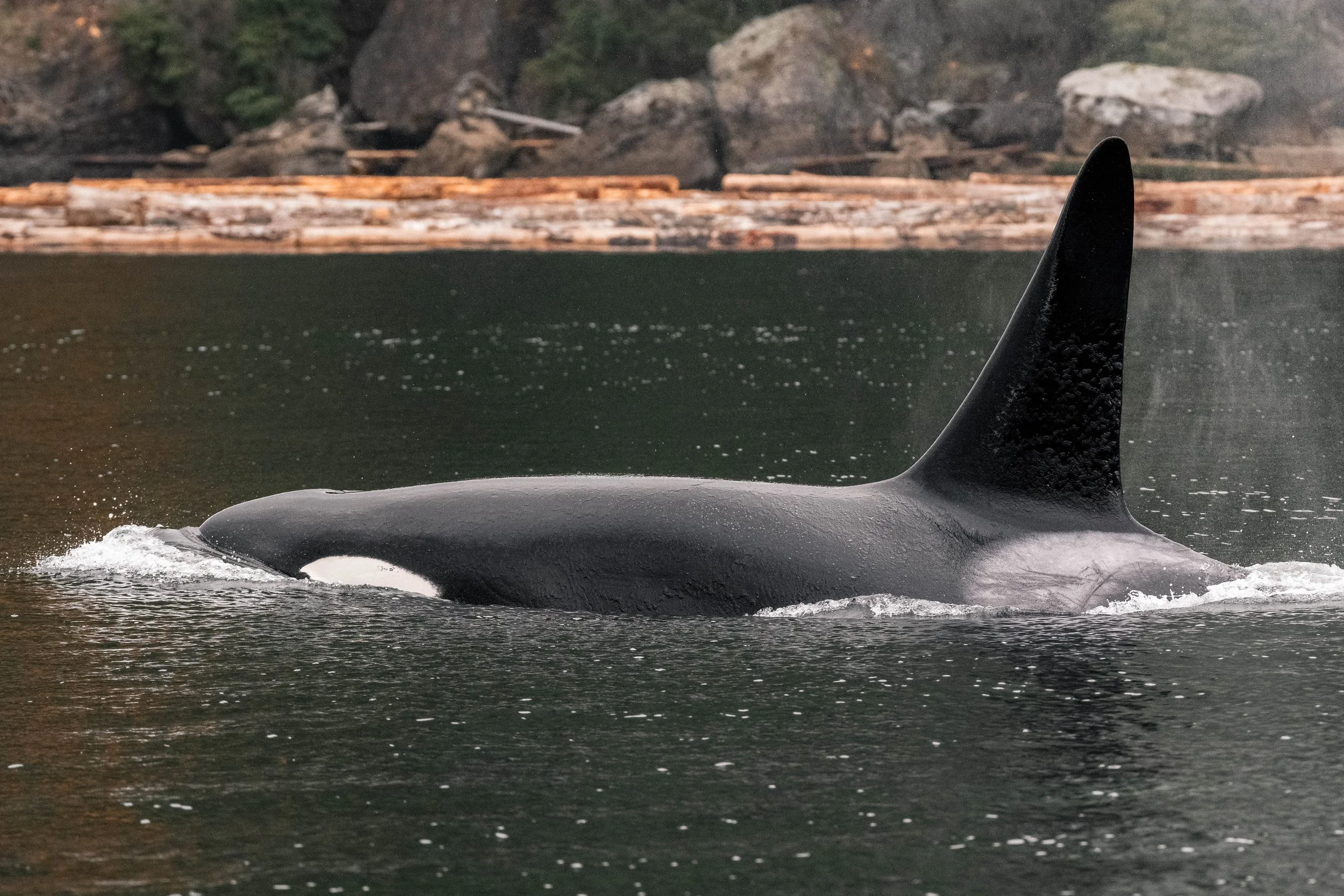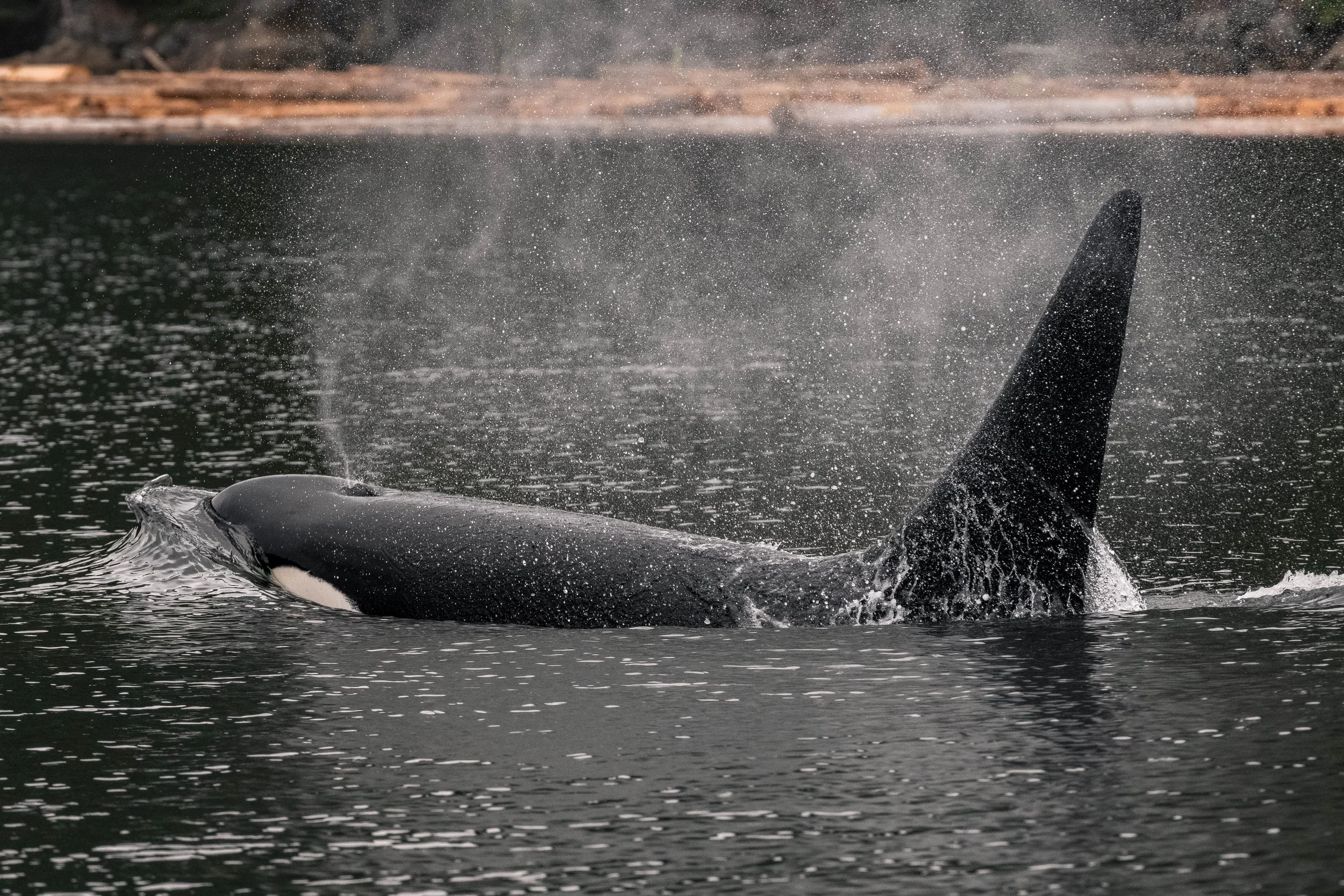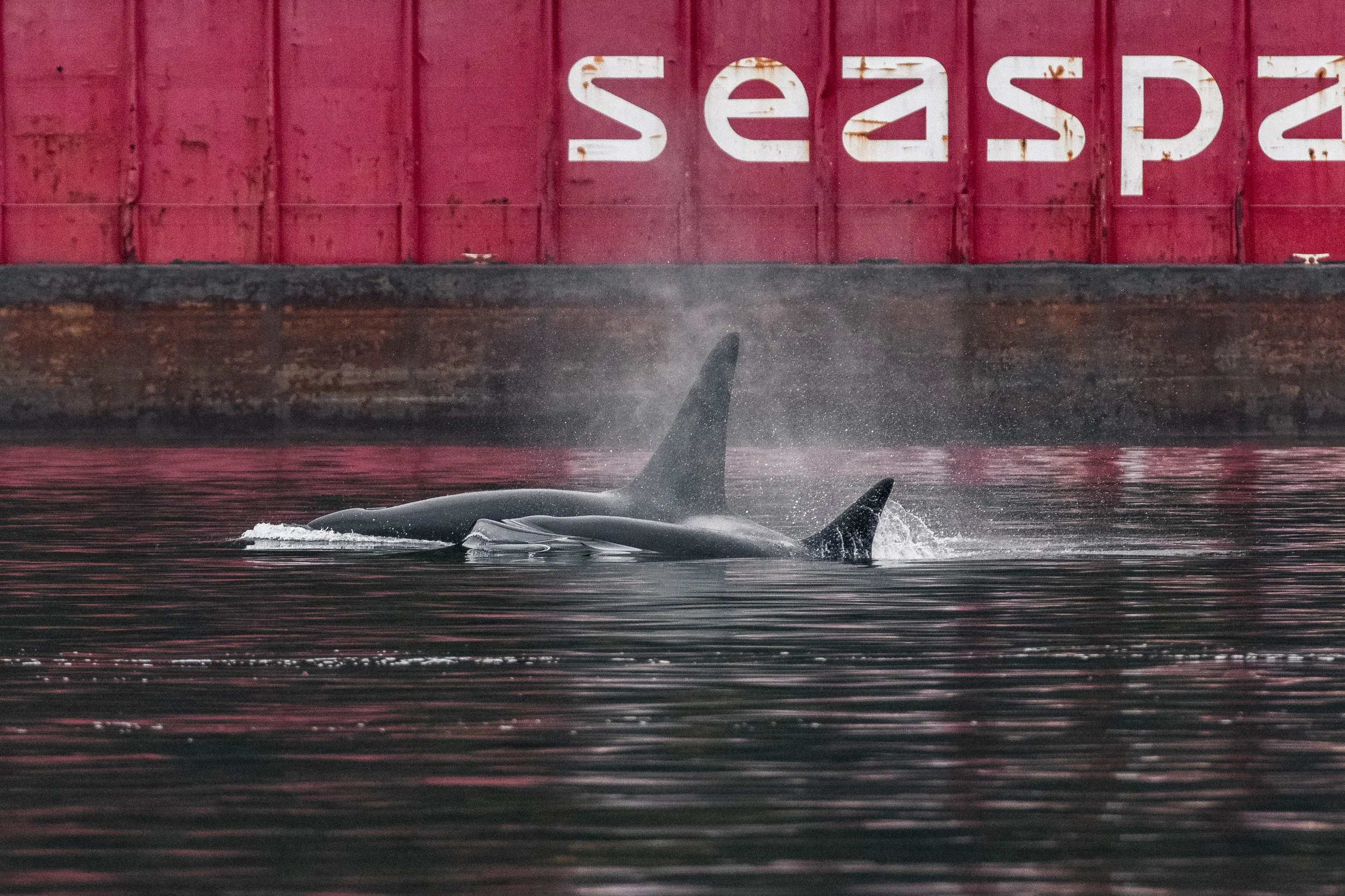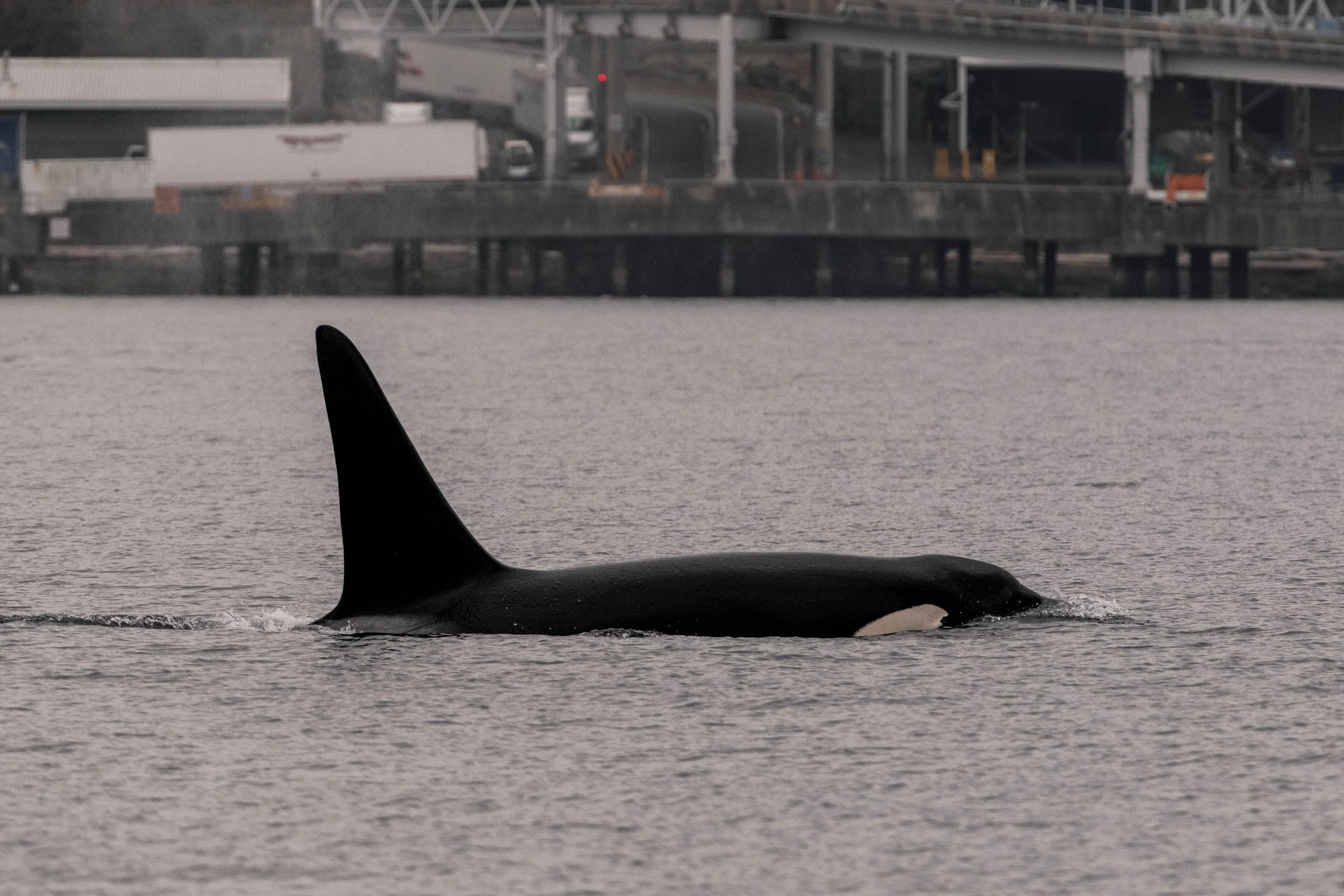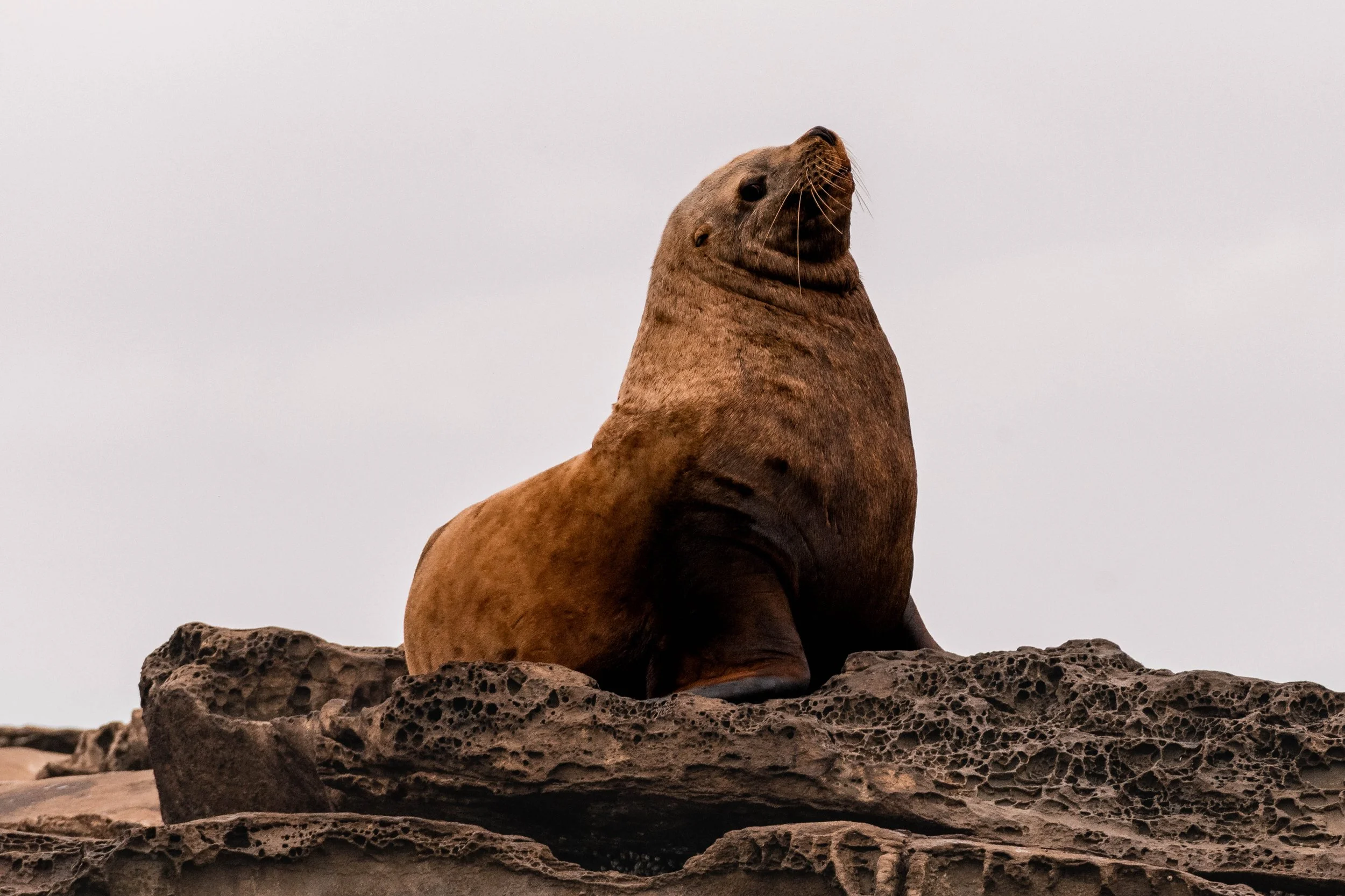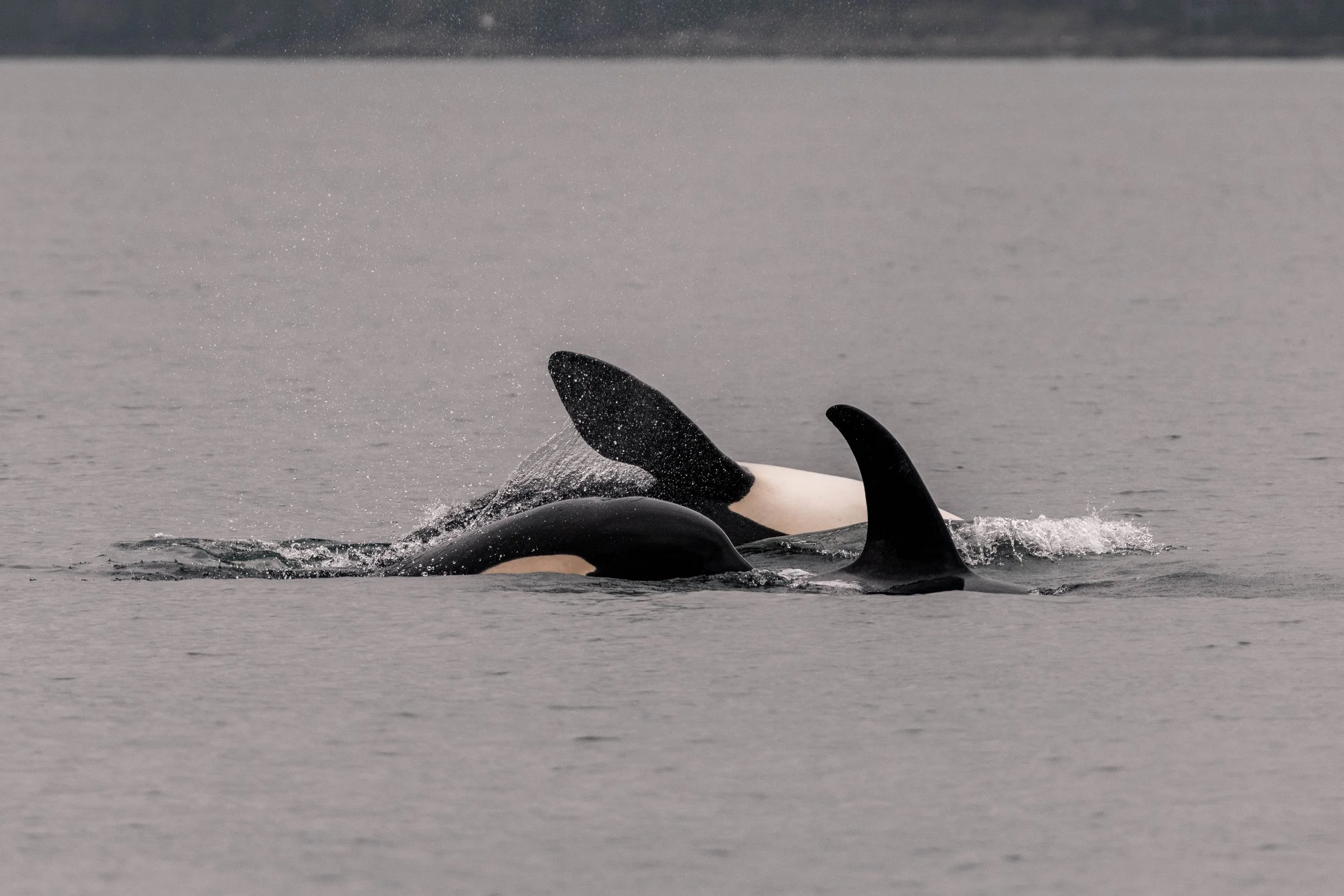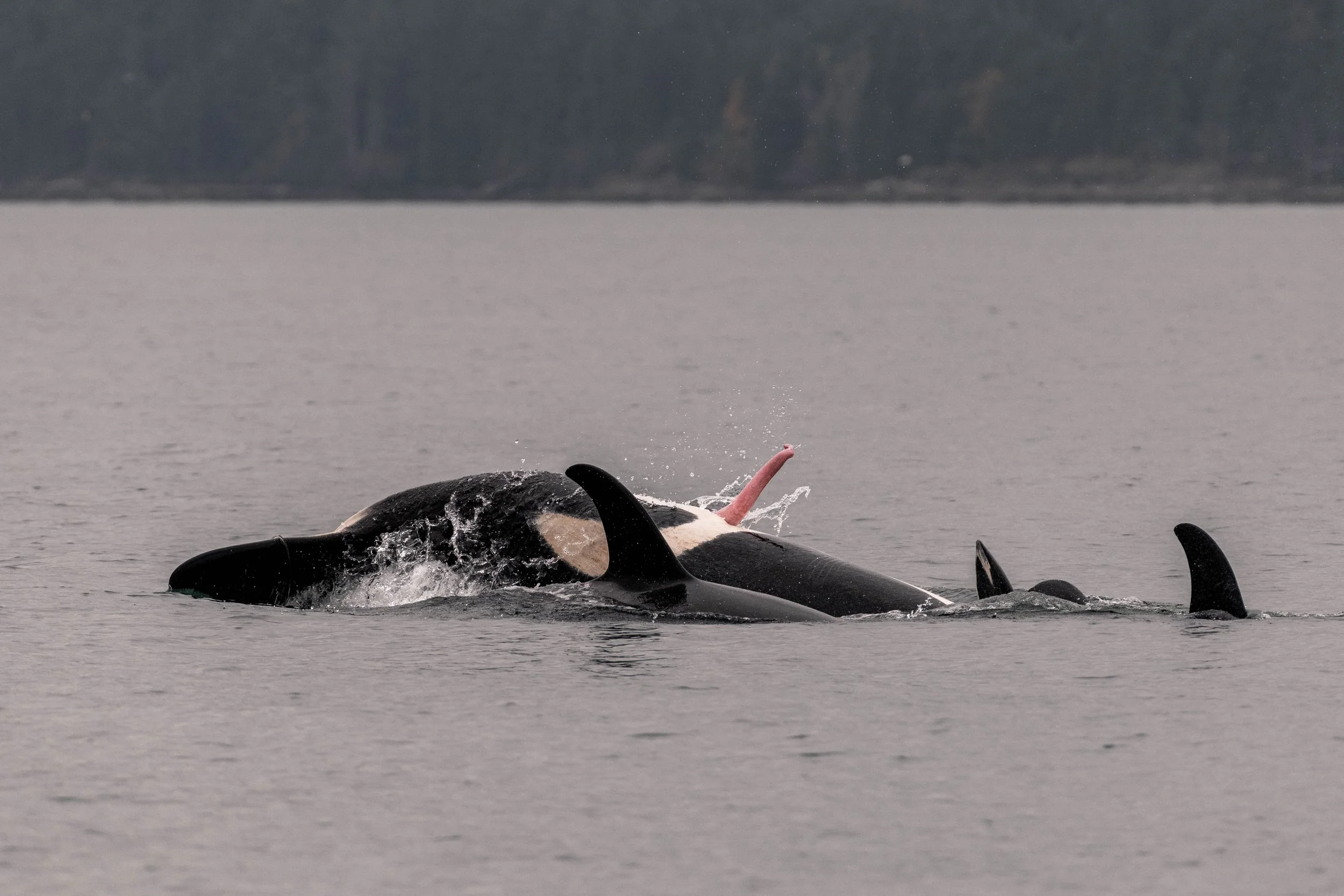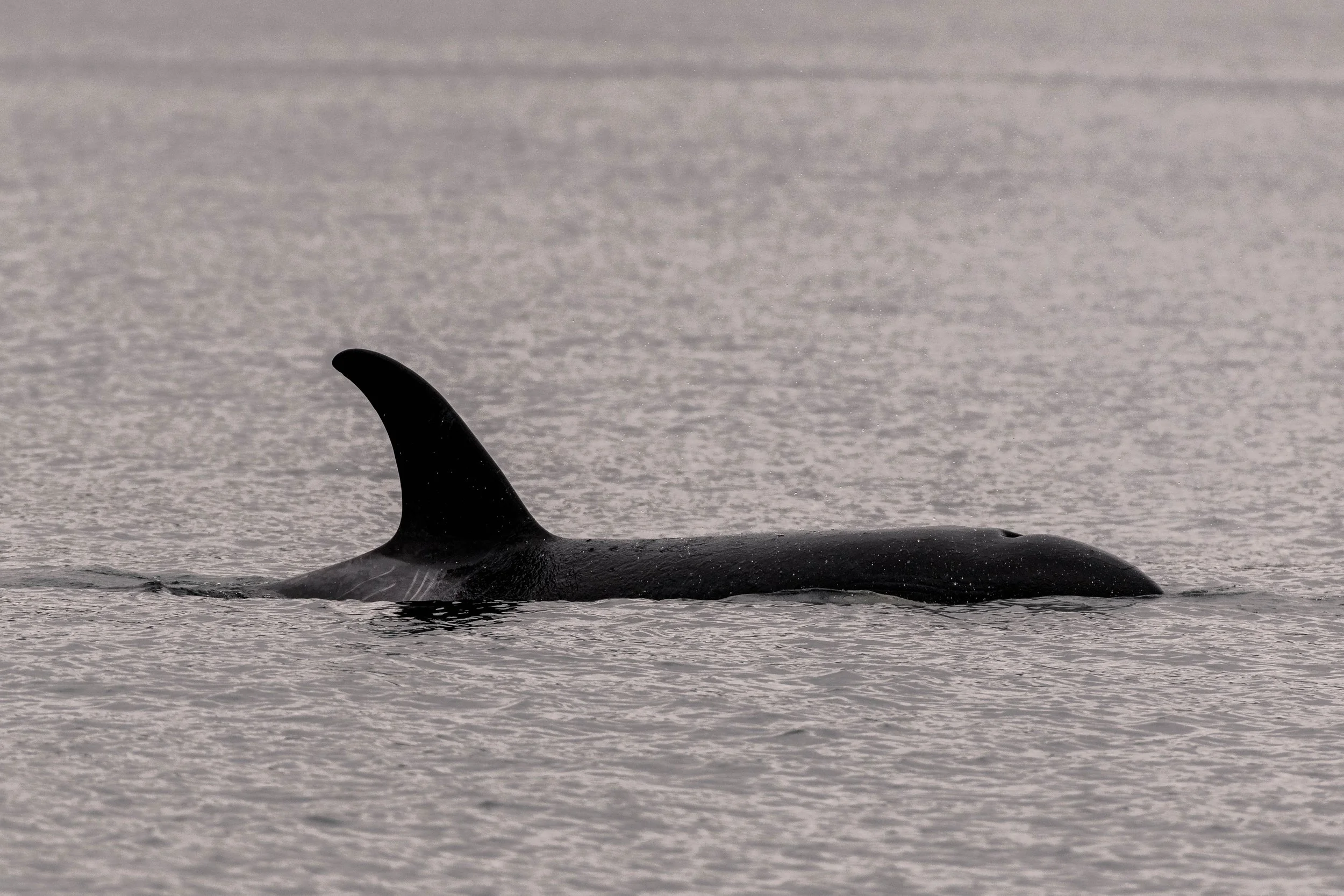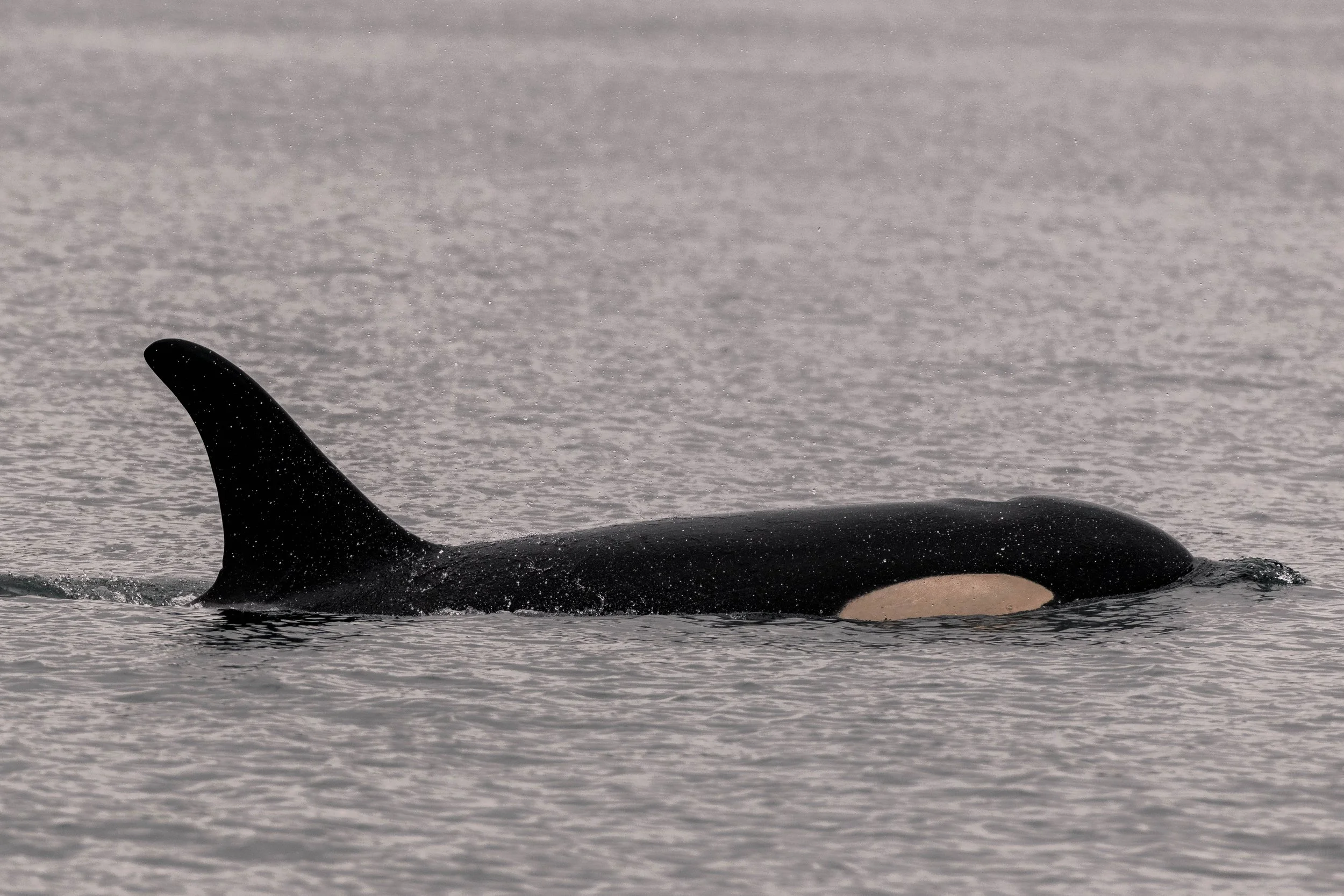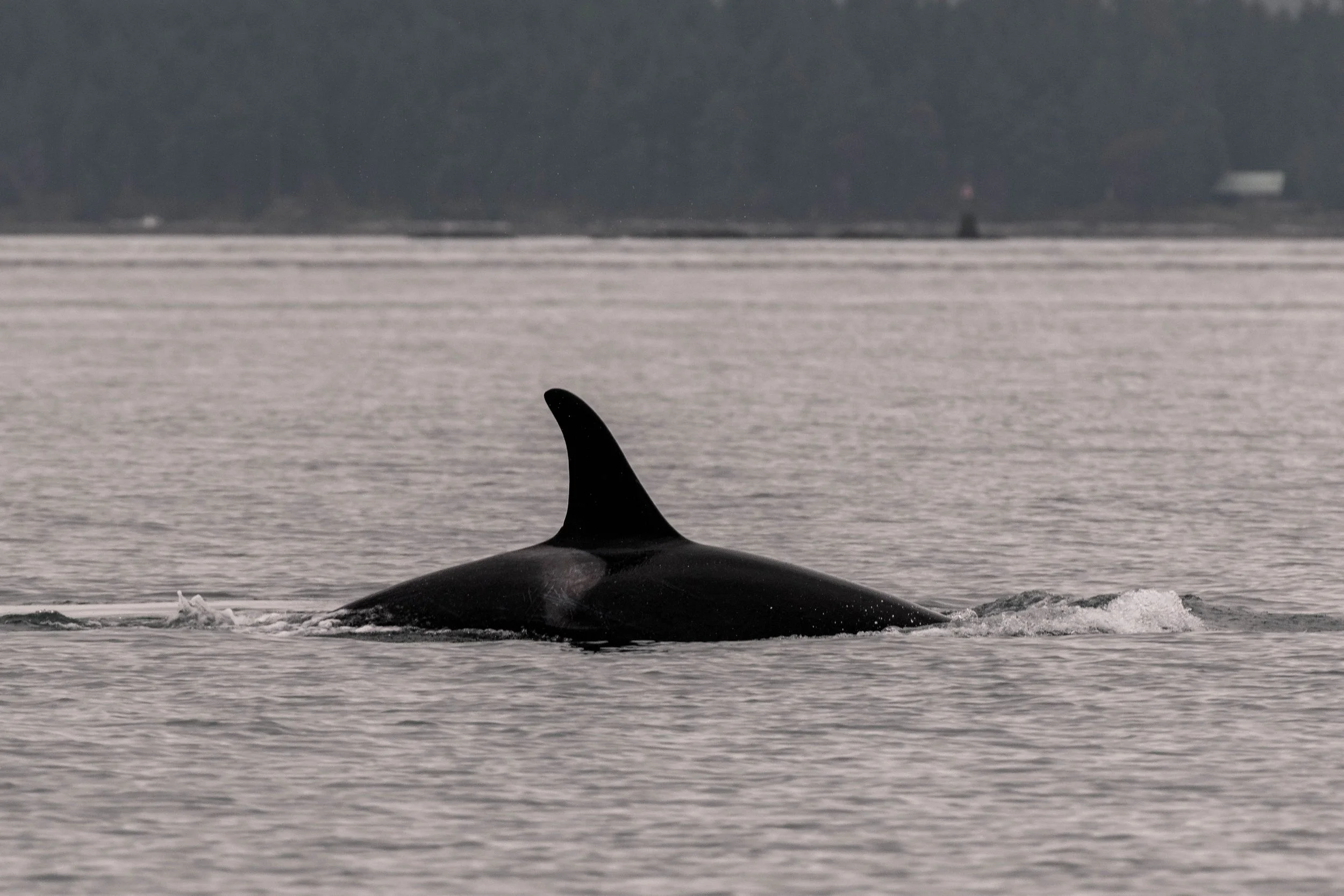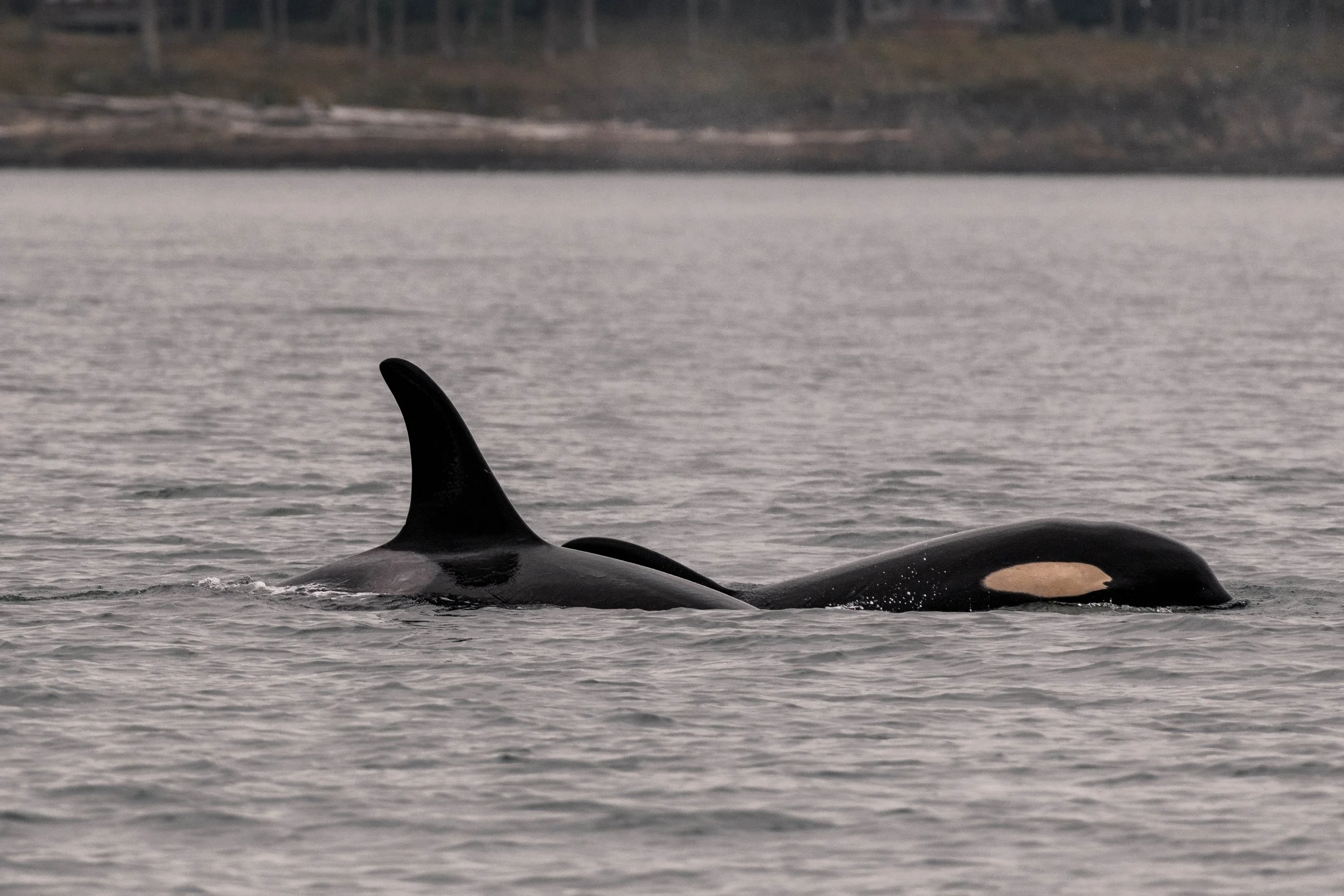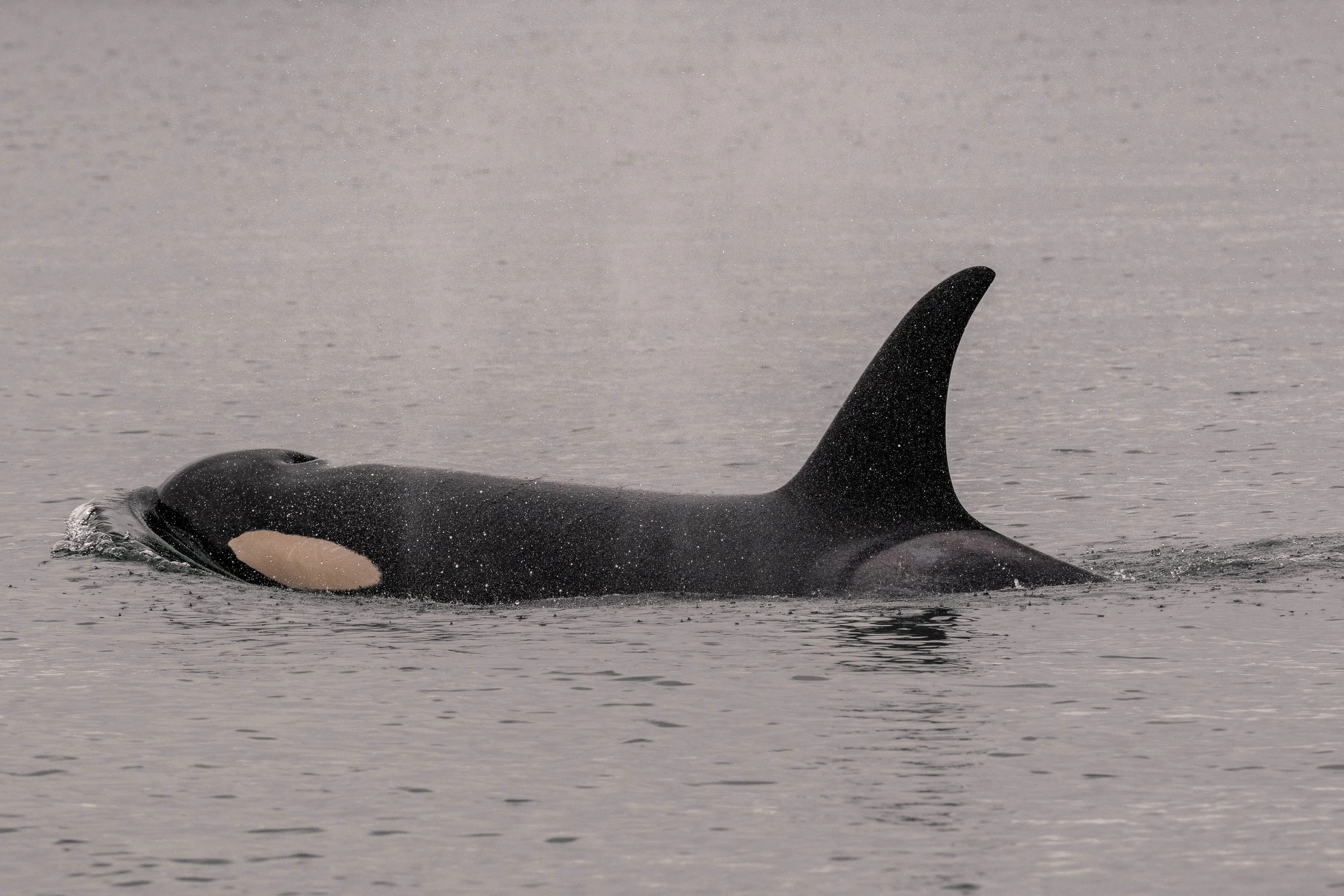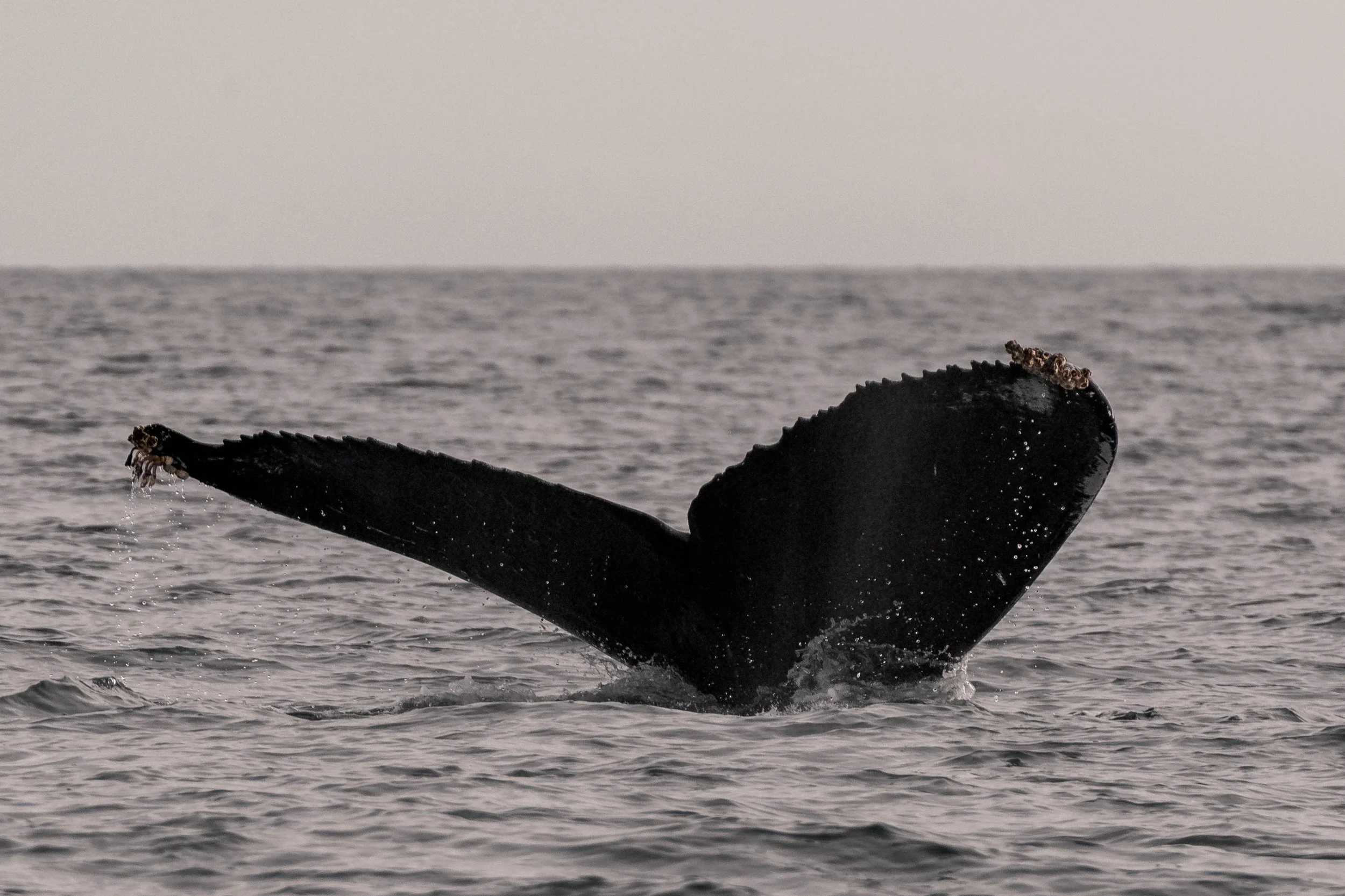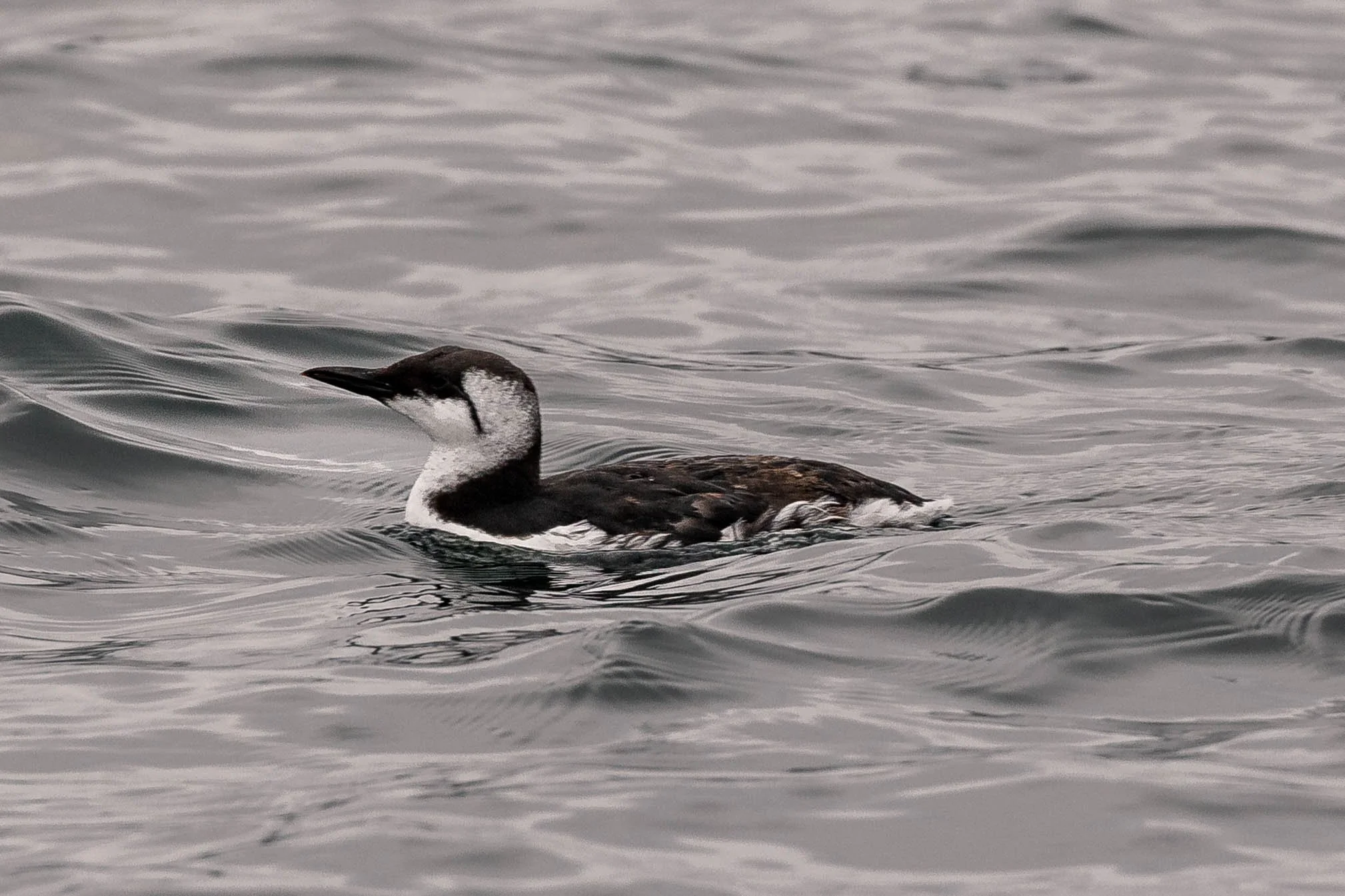October 21, 2025 - NRKW, Ts, and HBs in one trip!
Once our guests boarded Kula and Keta and we were ready to begin the day’s exploration, we received some exciting news - orca had been spotted in False Narrows, just a short distance from our home port in Nanaimo! With all our whales being wild and untagged, every day on the water is a true adventure. We never quite know where we’ll end up or what we’ll encounter, and that unpredictability is part of the magic of whale watching.
It wasn’t long before our vessels pushed off the dock and made their way toward the sighting. Within just 20 minutes, we spotted our first whales of the day - three orca travelling together: two large males alongside a smaller female. After grabbing some ID photos, we confirmed this was the T101s, a well-known family of Transient (Bigg’s) orca:
T101 Reef ♀ (≤1969)
T101A Rush ♂ (1993)
T101B Lagoon ♂ (1997)
False Narrows is a fascinating and dynamic waterway - at times, it can be only 10 feet (3 metres) deep! Considering that a fully grown male orca’s dorsal fin can reach a towering 6 feet (1.8 metres) tall, it’s easy to imagine these giants nearly scraping the seafloor to pass through. While it’s technically possible for them to cross at low tide, it would be quite the squeeze! Thankfully, nearby Dodd Narrows offers a much deeper, easier route for them to travel through.
The T101s spent their time steadily travelling, a classic behaviour for this ecotype. For Transient orca, travelling often makes up much of their day as they search for prey such as seals, sea lions, and porpoises. Their range is immense - stretching from Alaska all the way down to California - so seeing where they choose to go next is always intriguing.
After spending time with the T101s, both Kula and Keta continued their exploration into the Strait of Georgia. The vessels spread out to cover more area - and before long, both crews were treated to incredible, yet very different, encounters!
Keta came across a pair of humpbacks travelling side by side. One whale lifted its flukes high with each dive, while the other remained a little more “tail-shy.” Luckily, a unique dorsal fin helped us confirm their identities: our fluker was Barge Boy (KEX0078), and the tail-shy companion was Sherwina (BCY0961)! These two were moving calmly through the Strait, surfacing in sync as they foraged below.
Meanwhile, Kula’s crew had discovered more orca - but this time, something extra special. These were not Transient orca like the T101s earlier in the day. Instead, they were identified as Northern Resident orca - a rarely seen ecotype this far south! The families present were the A25s, A42s, and A94 Mystery:
A25s
A61 Surge ♂ (1994)
A85 Cordero ♀ (2005)
A121 Twilight ♂ (2019)
A42s
A42 Sonora/Holly/Uma ♀ (1980)
A79 Current ♀ (2004)
A119 Venture ♀ (2018)
A135 (2024)
A88 Cameleon ♀ (2008)
A88 calf (2025)
A103 Albion (2013)
A114 Ashlar (2017)
A94 Mystery ♂ (2009)
The Northern Residents were in a lively mood - socializing, rolling, tail slapping, and even breaching! At one point, a “sea snake” was spotted at the surface, suggesting there may have been some courtship activity happening below the surface.
While Northern and Southern Resident orca are genetically similar, they differ in range and population status. Both feed primarily on fish - specifically Chinook salmon - but their population health tells two very different stories. There are currently approximately 325 Northern Residents, a number comparable to the Transient (Bigg’s) population, while the Southern Residents are critically endangered, with just 74 individuals remaining.
Why such a stark difference? A significant factor is location. The Northern coast of British Columbia is far less developed and less polluted than the southern regions where the Southern Residents spend most of their time. Rivers in the north tend to have healthier salmon stocks, providing the Northern Residents with a more reliable food source. With continued conservation efforts - such as stronger pollution controls and sustainable salmon management - there is hope that the Southern Residents, and their essential Chinook salmon, will one day recover.
As the encounter came to a close, Keta left the humpbacks behind and joined Kula to spend time with the rare Resident orca before both vessels continued on. On the way back north after the encounter, Kula encountered one more humpback - identified as Mammoth/Ocean (BCX1710). She was travelling steadily, performing deep dives likely in pursuit of krill below the surface.
Of course, whales weren’t the only wildlife spotted on today’s journey! Stinky Rocks, a well-known haul-out near Valdez Island, was packed with Steller Sea Lions and Harbour Seals resting and grooming on the rocky shoreline. The skies and shores were also bustling with birds, including Surf Scoters, Common Murres, and Gulls.
After a busy and whale-packed day, it was time for us to head back to home port. Days like today, where we saw not only two different species of whale, but also two unique ecotypes of orca, are incredibly rare, and we are so fortunate to live in a place where encounters like this are possible!
Please enjoy these photos taken by Marine Naturalists Aly Kohlman and Jordan Robinson.
T101s
T101A Rush surfacing in the calm water. Photo by Aly Kohlman.
T101A Rush showing off his eye patch and saddle patch. Photo by Aly Kohlman.
T101 Reef surfacing in the calm. Photo by Aly Kohlman.
T101B Lagoon surfacing with a blow! Photo by Aly Kohlman.
A great look at T101B Lagoon.Photo by Aly Kohlman.
T101A Rush surfacing beside mom, T101 Reef. Photo by Aly Kohlman.
T101A Rush surfacing. Photo by Aly Kohlman.
T101A Rush with the water cascading off his back. Photo by Jordan Robinson.
Sherwina and Barge Boy
Barge Boy (left) and Sherwina (right) surfacing next to heach other. Photo by Jordan Robinson.
Sherwina’s distinct dorsal fin. Photo by Jordan Robinson.
Barge Boy going for a dive. Photo by Jordan Robinson.
Other wildlife at Stinky Rocks
Two Bald Eagles spending time on the rock together. Photo by Aly Kohlman.
Two Harbour Seals on Stinky Rock, posing for the camera. Photo by Aly Kohlman.
Steller Sea Lions on the rocks, fighting for postioning. Photo by Aly Kohlman.
An itchy Male Steller Sea Lion. Photo by Aly Kohlman.
Male Steller Sea Lion striking a pose on the rocks. Photo by Aly Kohlman.
Northern Resident Orca
A61 Surge has a distinct curve to the top of his dorsal fin. Photo by Aly Kohlman.
One of the Northern Residents swimming on it’s side with one poking its eye patch out of the water, and A114 Ashlar’s dorsal fin. Photo by Aly Kohlman.
We call this a sea snake, but did you know another term for a whale penis is a “Dork”? Photo by Aly Kohlman.
A114 Ashlar surfacing. Photo by Aly Kohlman.
A great look at A119 Venture. Photo by Aly Kohlman.
A119 Veture showing off her saddle patch. Photo by Aly Kohlman.
A135 surfacing and shownig off their eye patch. Photo by Aly Kohlman.
A135 surfacing beside A119 Venture. Photo by Aly Kohlman.
A88 Chameleon surfacing with her 2025 calf beside her! Photo by Aly Kohlman.
A42 Holly/Sonora surfacing with her distinctly open saddle patch visible. Photo by Aly Kohlman.
A88 Cameleon surfacing with her calf leading the charge! Photo by Aly Kohlman.
A135 lunging through the water. Photo by Jordan Robinson.
One of the whales breaching! Photo by Jordan Robinson.
Ocean/Mammoth
Mammoth going for a dive. Photo by Aly Kohlman.
Surf Scoters floating in the water. Photo by Jordan Robinson.
A Common Murre floating by. Photo by Jordan Robinson.
A Great Blue Heron fishing at the docks. Photo by Jordan Robinson.


